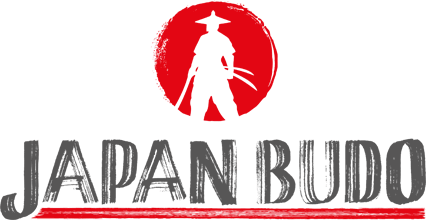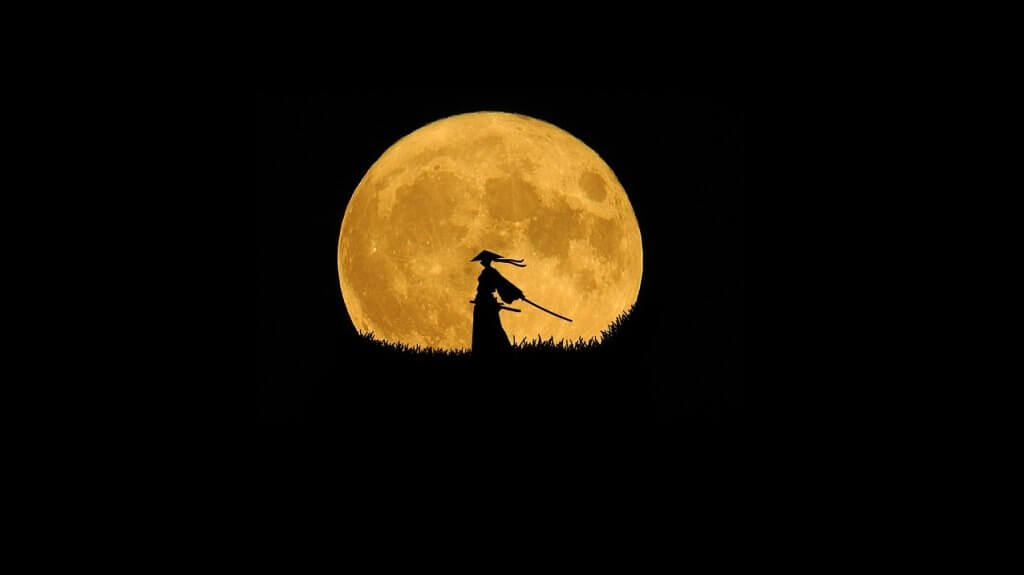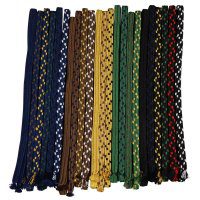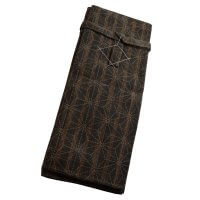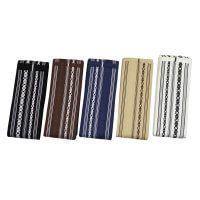What are Katana?
Katana are characteristic swords. They have single-edged blades with a curvature. The swords are worn tucked through the belt with the cutting edge facing upwards. The blade length is more than 2 shaku (60.6cm).
The mount (koshirae) is often kept relatively simple and is less ornate than the mount of the tachi, another samurai sword, for example.
The handles are usually waisted on one side and thus form the basis for a harmonious look, where the curvature of the blade is continued in the handle.
The handle is wrapped with a grip strap, which is usually made of silk and can be tied in various ways. The colour and type of wrapping supports the overall appearance of the katana.
The sword has metal fittings that are artistically decorated. The blade (tsuba) and the end caps of the hilt (fuchi and kashira) can be worked to the highest standard. Good examples of these are collector's items and are sometimes traded at prices that are just as high as the prices for sword blades.
In some katana specimens, the mount also includes kogai. Kogai are an accessory that could be used as chopsticks, for example.
Likewise, some mounts have a recess including an inserted kogatana, a small knife that was used as a carving knife or knife for eating. These kogatana have an ornate handle called a kozuka, which is a collector's item just like the tsuba and fuchigashira mentioned above.
What is the history of the Katana?
Swords the length of the katana were used in the 13th century.14th century in use. Most of the early katana still in existence today date from the beginning of the 14th century.
There are also katana blades that date from much earlier times. However, these were originally longer blades that were shortened to katana length in the course of history. This is called suriage.
Developments in warfare led to swords with shorter blades (such as the katana) coming into fashion. These were better suited to fighting inside castles, for example. In such an environment, there is sometimes little space available and a long sword cannot be wielded properly.
From this period onwards, katana became part of the samurai's permanent armoury and gradually replaced the tachi.
In the course of the 15th century, katana became the primary sword of the samurai. From the Edo Shogunate at the latest, i.e. at the beginning of the 17th century, it became the most important sword.
Together with the shorter wakizashi, it was part of every samurai's compulsory equipment. Katana and wakizashi formed a set known as daisho.
Katana blades were the beloved treasures of samurai, local rulers (daimyo) and shoguns. They had extensive collections of high-quality swords and katana were popular gifts among influential people.
But the swords were also feared, even by those who had to deal with them on a daily basis.
There is a legendary story that the subordinates of the Tokugawa shogunate were not allowed to use blades made by the blacksmith Muramasa because they were considered bloodthirsty and there were several incidents involving such blades in which members of the family were injured or killed.
How did Katana become known in our country?
The swords are very well known in our country today. Various reasons have contributed to this.
Gifts
Some swords were given as gifts on high-ranking international occasions. Particularly well known is the Katana gift for Harry S. Trumana work by Masamune. A sword of this quality is usually kept as a national treasure in Japan.
It is extremely rare for blades of this class to exist outside Japan. Such gifts are then usually exhibited in the recipient country and have considerably enhanced the international reputation of the swords.
International exchange
There have always been commercial travellers and doctors on foreign assignments who were enthusiastic about the swords in Japan. This is how the first international collections were formed over 100 years ago.
Spoils of war
The confiscation of swords by the American military after the Second World War had a major, but less favourable influence on their international distribution.
Thousands of swords were deported from Japan to the USA. Many were taken home by soldiers as spoils of war.
In America, the former samurai swords are widespread and have a large fan base.
Cinema
Last but not least, film and television played an important role. Over the course of the last century, Japanese film has enjoyed great popularity. In addition to classics such as Godzilla, a number of stories and events from Japanese history and the samurai were also made into films. Swords were of course important props and thus became known to a broad mass of viewers.
Over the years, there have also been several Hollywood productions in which Katana has played an important role.
There are also always new films and series about Japan and the samurai, such as the relatively new series "Shogun" on Disney+
Are katana still made today?
In fact, katana are still made in Japan today, using the same methods as in the days of the samurai.
Such swords, which can be commissioned today, are called shinsakuto. Shinsakuto translates as "newly made sword". There are still numerous traditional swordsmiths in Japan for this purpose.
If you are interested in a newly manufactured Katana from Japan, you are welcome to contact us and we will organise the production in Japan.
Basically you will find in our Katana online shop but also many other interesting offers, from blunt training swords to high-quality antiques and a selection of swords from contemporary smiths.
